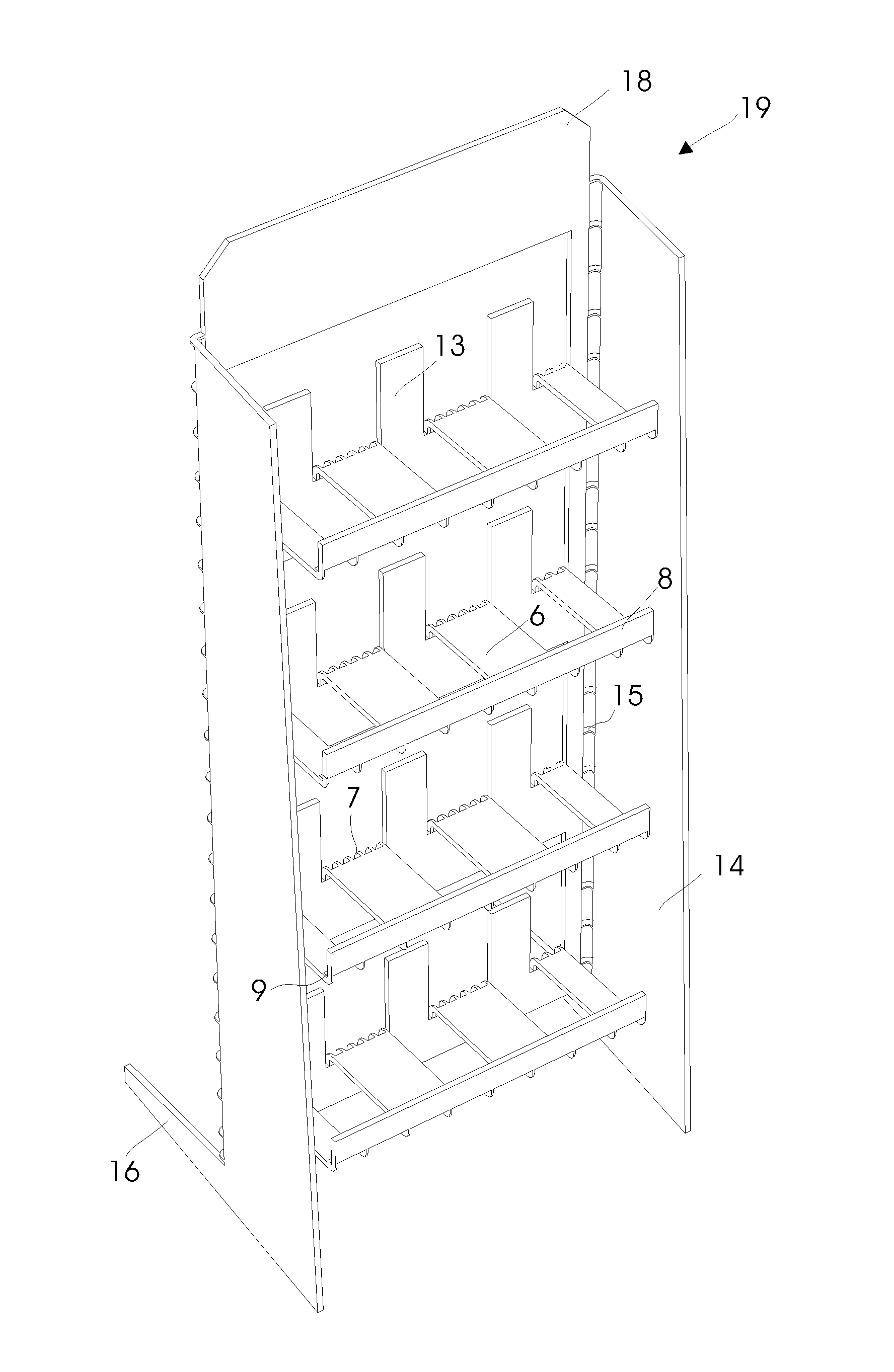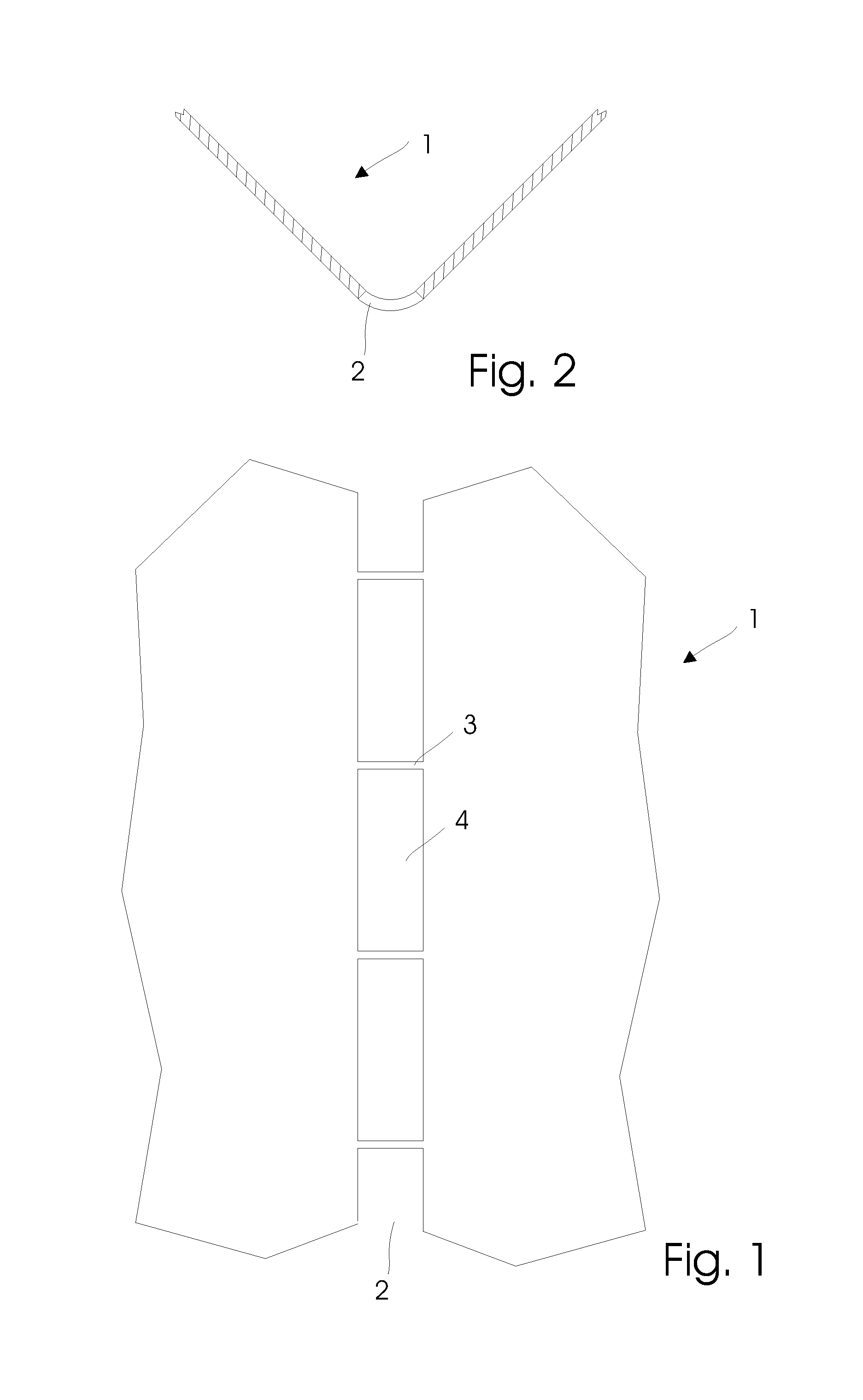Blank for a rack
a rack and rack technology, applied in the field of racks, can solve the problems of occupying space for exhibition stands, difficult and time-consuming folding, general insufficient collapse resistance and stability, etc., and achieve the effect of quick and easy assembly
- Summary
- Abstract
- Description
- Claims
- Application Information
AI Technical Summary
Benefits of technology
Problems solved by technology
Method used
Image
Examples
example
[0091]An exhibition stand of the configuration shown in FIG. 4 was produced by a plate with the pattern shown in FIG. 3. It took approximately 30 seconds. The plate was of ordinary iron and had a thickness of 1.5 mm.
[0092]The bending region of each shelf had the following dimensions:
[0093]
Width of the bending region3mmSpacing between the segments14mmWidth of each segment3mm
[0094]The shelf had a length of 390 mm and a width of 130 mm and was able to carry objects such as e.g. goods with a total weight of approximately 15 kg.
[0095]The shelf was bent about its bending region by pulling in a region at the front edge of the shelf with approximately 10 kg.
[0096]The front edge of each bending region had the following dimensions:
[0097]
Width of the bending region5mmSpacing between the segments52mmWidth of each segment2mm
[0098]The bending region of each side has the following dimensions:
[0099]
Width of the bending region5mmSpacing between the segments52mmWidth of each segment2mm
PUM
 Login to View More
Login to View More Abstract
Description
Claims
Application Information
 Login to View More
Login to View More - R&D
- Intellectual Property
- Life Sciences
- Materials
- Tech Scout
- Unparalleled Data Quality
- Higher Quality Content
- 60% Fewer Hallucinations
Browse by: Latest US Patents, China's latest patents, Technical Efficacy Thesaurus, Application Domain, Technology Topic, Popular Technical Reports.
© 2025 PatSnap. All rights reserved.Legal|Privacy policy|Modern Slavery Act Transparency Statement|Sitemap|About US| Contact US: help@patsnap.com



